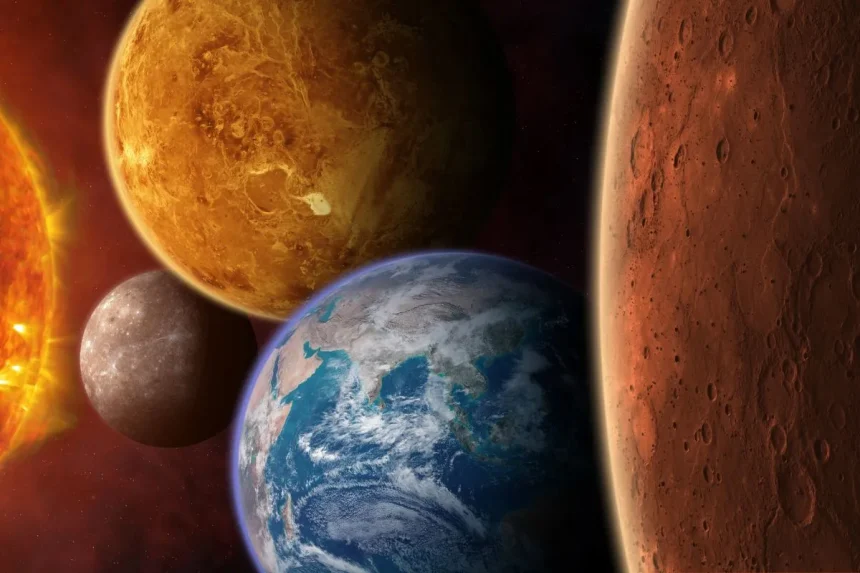When we think about “Sky” and “Mercury,” we are often juxtaposing two vastly different concepts—one celestial and the other physical. The “Sky” represents the vast expanse above Earth that is integral to our experience of the universe, while “Mercury” can refer to either the element, a metal with unique properties, or the planet in our solar system. This article will delve into the distinctions between these two entities, highlighting their unique characteristics, roles, and significance in both scientific and metaphorical contexts.
The Sky: An Overview

The sky is a broad term that encompasses the expanse of the atmosphere and outer space that we perceive from the surface of Earth. It plays a crucial role in our daily lives and has been a source of fascination for humanity throughout history.
1. Composition and Structure
- Atmosphere: The sky is primarily composed of the Earth’s atmosphere, a mixture of gases including nitrogen (78%), oxygen (21%), and trace amounts of other gases such as argon and carbon dioxide. The atmosphere is divided into several layers, including the troposphere, stratosphere, mesosphere, and thermosphere, each with distinct characteristics and functions.
- Appearance: The appearance of the sky changes throughout the day due to the scattering of sunlight by atmospheric particles. During the day, the sky appears blue due to Rayleigh scattering, while at sunrise and sunset, it can display a range of colors from orange to pink due to longer light paths through the atmosphere.
2. Role and Significance
- Weather and Climate: The sky is a key indicator of weather patterns and climatic conditions. Meteorological phenomena such as clouds, storms, and precipitation are observable in the sky, influencing weather forecasting and climate studies.
- Astronomy and Navigation: The sky is also the canvas for astronomical observations. It hosts celestial objects like stars, planets, and galaxies, and serves as a reference for navigation and timekeeping throughout history.
Mercury: The Element

Mercury, as an element, is a fascinating substance with distinct physical and chemical properties. It is represented by the symbol Hg on the periodic table and is known for its unique characteristics.
1. Properties
- Physical Characteristics: Mercury is a heavy, silvery liquid metal at room temperature. It has a high density and is the only metal that is liquid at standard conditions of temperature and pressure.
- Chemical Behavior: Mercury is known for its ability to form amalgams with other metals. It is used in various industrial processes and applications, including thermometers, barometers, and fluorescent lights. However, mercury is also toxic, and its exposure can have serious health implications.
2. Historical and Industrial Uses
- Historical Significance: Mercury has been used since ancient times for its unique properties. It was known to the alchemists and was used in medicine and various industrial applications.
- Environmental and Health Concerns: Due to its toxicity, mercury poses environmental and health risks. Its accumulation in ecosystems can lead to harmful effects on wildlife and human health, making its management and regulation a critical issue.
Mercury: The Planet
Mercury is also the name of the smallest and closest planet to the Sun in our solar system. It shares the name with the element but has its own set of characteristics.
1. Physical Characteristics
- Size and Composition: Mercury is the smallest planet in the solar system, with a diameter of about 4,880 kilometers. It has a rocky surface and a large iron core, contributing to its high density.
- Orbit and Rotation: Mercury has an eccentric orbit and a slow rotation period. It completes an orbit around the Sun in about 88 Earth days but rotates on its axis very slowly, resulting in long days and nights.
2. Exploration and Research
- Space Missions: Mercury has been studied by several space missions, including NASA’s Mariner 10 and MESSENGER. These missions have provided valuable data about its surface, composition, and magnetic field.
- Significance in the Solar System: Mercury’s proximity to the Sun and its geological features offer insights into the early history of the solar system and the processes that shaped the terrestrial planets.
Conclusion
In summary, the “Sky” and “Mercury” represent two vastly different domains: one is a natural phenomenon that envelops our planet, and the other refers to both an element with unique properties and a planet in our solar system. While the sky influences our daily lives and our understanding of the universe, mercury (both as an element and a planet) offers a glimpse into the physical and cosmic aspects of our world. Exploring these differences enriches our appreciation of both the natural and scientific realms, underscoring the diversity and complexity of the world around us.
Get more info: https://www.timelinetale.com/







